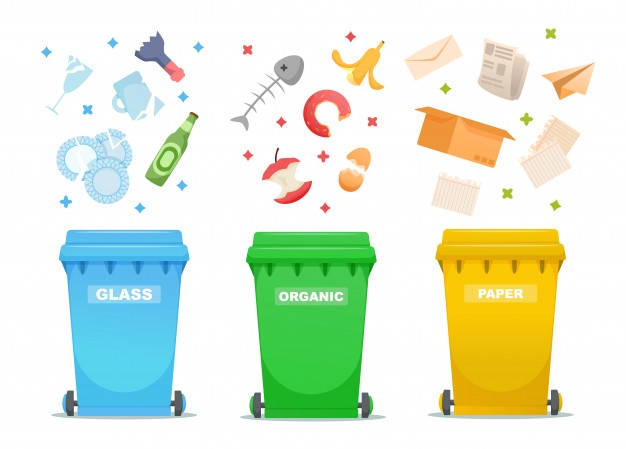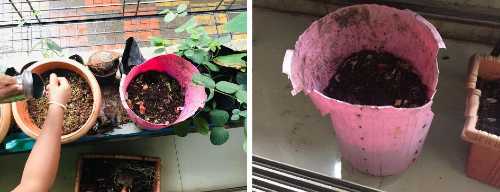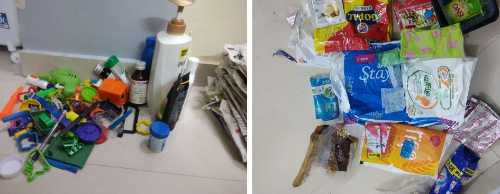
Campaigns
Waste Management

Waste management is the activities and actions required to manage waste from its inception to its final disposal. This includes the collection, transport, treatment and disposal of waste, together with monitoring and regulation of the waste management process. Generally, waste is categorized within 5 categories: Liquid waste; Solid waste; Organic waste; Recyclable waste and Hazardous waste. We, have focused on the nearest and the possible waste that needs attention and can be looked into it. Landfills are an increasingly pressing problem. Less and less land is available to deposit refuse, but the volume of waste is growing. As a result, segregating waste is not just of environmental importance, but also of economic concern.
Objectives are as follows:
- Seeking to minimise environmental impact by proper segregation of waste (dry ad wet) ultimately minimising the load on dumping yards
- Promote 3Rs – Reduce, Reuse and Recycle.
- Building on existing resources and services
- To create, implement and demonstrate the impact and increased sustainability of waste collection methodologies
- Promoting public awareness through consultation and participation
Waste Management is broadly divided in two categories
Wet waste management
Wet waste typically refers to organic waste usually generated by eating establishments and is heavy in weight due to dampness. This type of waste can be easily broken down and eliminated at its formation itself. Different measures for managing the wet waste are through Decomposting; Biogas; Vermicomposting and Briquetting.
Wet waste management and Household level
The team guides and helps the individuals to segregate the wet and dry waste at the inception level and promotes to decompose the wet waste collected at the house level. This can be done through available decomposing units for household and also provide guidance for DIY composting at home. The residual of the decomposed can be used as fertilizers and the moisture drained down as a liquid can be used as pesticide for the plants. We also offer simple ways to manage the household wet waste for a single flat up to apartment level. A simple and a ready prototype is available in the market - “Magic Bucket” (courtesy of Paryavaran Dakshata Mancha), which a perfect example for wet waste management at home.
Wet waste at society level
Alike the wet waste process at household we provide information about the processes available for eliminating waste at society level. This is also covered at the seminars taken by the team. Along with providing information, the team also assists in implementation of large composting units for the societies.An initial step and easy process is introducing two separate disposal drums on your complex ground for the people to aid them in proper segregation of waste.We have been trying to connect with like-minded organisations which are solely dedicated to waste management in apartment complex.
Different types of composting at society level are: Pit Composting; Concrete compost pits; vermi-compost etc.
Dry waste Management
To influence residents through “Swachha Dombivli Abhiyan” we have conducted seminars that provide easy solutions for segregation of different types of household waste and its proper management. Through the seminars, the audiences were made realized about the seriousness of the current predicament in our city and the following repercussions that might occur if not dealt with. We have defined the dry and wet waste in simple words so that people could easily understand and able to recognize the differences between them.
Till date we have visited 35 residential societies, social community groups, schools and colleges across the city and gave seminar to approximately 3500 people.
A key step towards dry waste management is forming a chain of Scrap collector/ recyclers (Bhangarwala). While identifying the solutions for the increasing waste management problem, the team realized that the important and nearest person who can help in this mission is the nearest bhangarwala. This community has been an integral part of our society providing door step services and collecting all our household waste. The team has connected all the bhangarwala and unified them in this mission by helping them to understand the different avenues available for recycling refurbishing and also tying them up with specific companies, providing a win-win solution for the bhangarwala and the society.
For eg: helping the bhangarwala understand the importance of plastic recycling; tying them with the plastic recyclers nearby, which will promote them to collect plastic from the public ultimately promoting proper management of plastics through household.
List of items accepted by Bhangarwala:
- Old cloths
- Plastic
- Paper and Cardboard
- Glass
- Metals
- E-waste
Note: These people are providing not only provide door to door service but also aid in proper management of waste, ultimately preventing waste going to dumping yards. Therefore, please do not expect anything in return from them.
The below is a practical application of wet waste management at household. The wet waste originating from the house is decomposed in a homemade composting bucket. The residual can be used as fertilizers for plant.

A perfect example of how one can segregate house hold plastic waste. These images show segregation of different types of plastic waste like milk bags, wrappers of eatable items, water bottles etc. This waste is then given to the nearest Bhangarwala.

